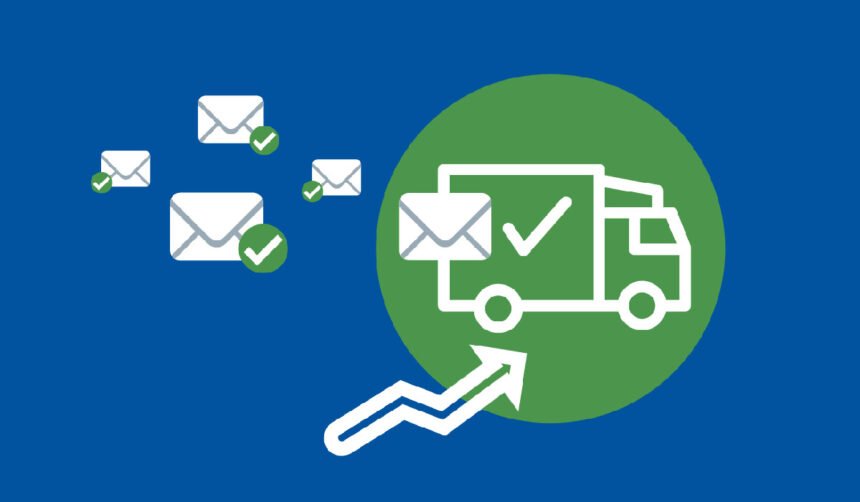SPF, DKIM, and DMARC work together to authenticate sender identity and protect inbox placement.
Exceeding the SPF 10-lookup limit causes authentication failure, often sending legitimate emails to spam.
DKIM alignment requires the “From” domain to match the DKIM signature domain to maintain trust.
A weak or misaligned DMARC policy exposes your domain to spoofing and phishing risks.
Audit all email authentication records quarterly to maintain a clean, secure, and compliant setup.
Work with a reputable ESP to monitor, test, and update authentication protocols consistently.
Email authentication is the technical process of verifying that your messages are legitimate. Protocols like SPF, DKIM, and DMARC act as your domain’s ID badge, verifying that every email truly comes from you. When configured correctly, these safeguards build trust and ensure consistent inbox placement. When they fail, even authentic messages can be marked as fraud.
One of the most common causes of this failure is exceeding the 10 DNS lookup limit for SPF. SPF flattening is a critical but often misunderstood fix for this issue. Flattening optimizes SPF records to limit DNS lookups that can break authentication. Understanding this and other common mistakes in email authentication can help you secure your domain and ensure every campaign you send is successful.
The Authentication Traps That Kill Your Email Delivery
Think of email authentication as the secret handshake of the internet. Protocols like SPF, DKIM, and DMARC are your domain’s word of honor. They tell the world, “Yes, this message is truly from me.” When they work, your emails find a welcome home in the inbox. When they fail, even your most brilliant campaign gets treated like a fraud.
A simple error in this system can sabotage your work. It turns your own domain into an enemy of deliverability. Your open rates plummet, your reputation suffers, and your messages vanish. Let’s expose the common traps that cause legitimate emails to fail this critical digital handshake.
Trap 1: The Bloated SPF Record
Sender Policy Framework (SPF) gives inbox providers a list of approved senders for your domain. It is a simple concept with a strict, fatal limit: ten.
Your SPF record gets just ten DNS “lookups” to check its sources. Each time you add a third-party service with an include statement, you use one of those lookups. Many businesses add service after service, unaware they have built a record that breaks its own rules. Once you pass ten, the entire SPF check fails. Your email looks unauthorized, and its journey to the inbox likely ends.
A related issue is the fossilized record. When you switch your email provider or retire a tool, that old entry in your SPF record becomes a useless, and potentially risky, piece of code. Audit it, or it will hurt you. If you have any doubts about your SPF record, you can always use an SPF checker to clear up any concerns.
Trap 2: The Mismatched DKIM Signature
DomainKeys Identified Mail (DKIM) adds a digital signature to your email, a seal that proves its contents were not altered. The trap here is not the signature itself, but a subtle mismatch known as alignment.
Alignment demands that the domain in your “From” address (what your customer sees) matches the domain in the DKIM signature. Many third-party tools sign emails with their own domain, not yours. While the email technically passes a DKIM check, the domains do not align. This mismatch creates distrust. To a DMARC policy, this failure is as bad as a broken signature, and it can send your email straight to the spam folder.
Trap 3: The Toothless DMARC Policy
DMARC is the enforcer. It instructs mail servers on how to handle emails that fail SPF or DKIM. The most common error is to leave this enforcer with no power.
A DMARC policy set to p=none is in a listen-only mode. It sends you reports about who uses your domain, which is a vital first step. But it offers zero protection. To leave your policy here is to watch a thief try to pick your lock and do nothing about it.
The opposite error is just as dangerous. To jump straight to p=reject without weeks of monitoring is to fire a guard before you give them a list of employees. You will inevitably block your own legitimate mail, which causes chaos for your operations and your customers.
Trap 4: Flying Blind with Unread Reports
The most profound mistake is neglect. DMARC sends you regular, detailed reports. These are blueprints of your email traffic, which show every server that sends mail from your domain, legitimate or not.
To ignore these reports is an act of willful ignorance. You will never know if a new marketing tool is misconfigured. You will never see the fraudster in another country who attempts to impersonate your CEO. These reports are your domain’s immune system feedback. Without review, you cannot spot the disease.
How to Build a Stronger Defense
You can escape these traps with discipline and foresight.
Unify Your Defenses
Use SPF, DKIM, and DMARC together. They are a three-legged stool; remove one, and the entire structure collapses.
Audit Your Records Relentlessly
At least once a quarter, validate your SPF and DKIM setup. Use free online tools. Remove old vendors. Ensure you are well under the 10-lookup limit.
Start DMARC as a Scout
Always begin with p=none. Analyze the reports. Identify all your legitimate senders. Only after you account for everyone should you escalate your policy to p=quarantine and then p=reject.
Trust a Quality ESP
A reliable Email Service Provider will offer tools and expert support to help you manage these protocols. Use their knowledge.
The Final Word: Your Domain’s Digital Sovereignty
Email authentication is not a feature. It is your domain’s declaration of identity in a lawless digital world.
Your SPF record is the wall around your fortress. Your DKIM signature is the royal seal on every decree. Your DMARC policy is the command given to your gatekeepers. A weakness in one invites invaders. Neglect them, and you hand the keys to your kingdom to phishers and spammers. They will wear your banner and ruin your name.
This is not about pleasing algorithms. It is about command. Command of your reputation, your messages, and your direct line to the people who trust you. Seize it.
FAQs
What is the most common authentication error?
Exceeding the 10-lookup limit in your SPF record. It’s a hard limit that causes immediate and total authentication failure for that protocol.
What is SPF flattening?
A technique to reduce your SPF record’s lookups by converting include mechanisms into direct IP addresses. This helps you stay safely under the 10-lookup limit.
Can I just use a DMARC policy of p=none?
Only for initial monitoring. A p=none policy offers zero protection against spoofing. The goal is to move to p=quarantine or p=reject.
Why does DKIM alignment matter if the check passes?
Because DMARC checks for alignment. A mismatched “From” domain signals potential deception to inbox providers, even with a valid signature.
How often should I audit my authentication records?
At least quarterly, and any time you add or remove a service that sends email on your behalf.
For More Information Visit Dotmagazine









